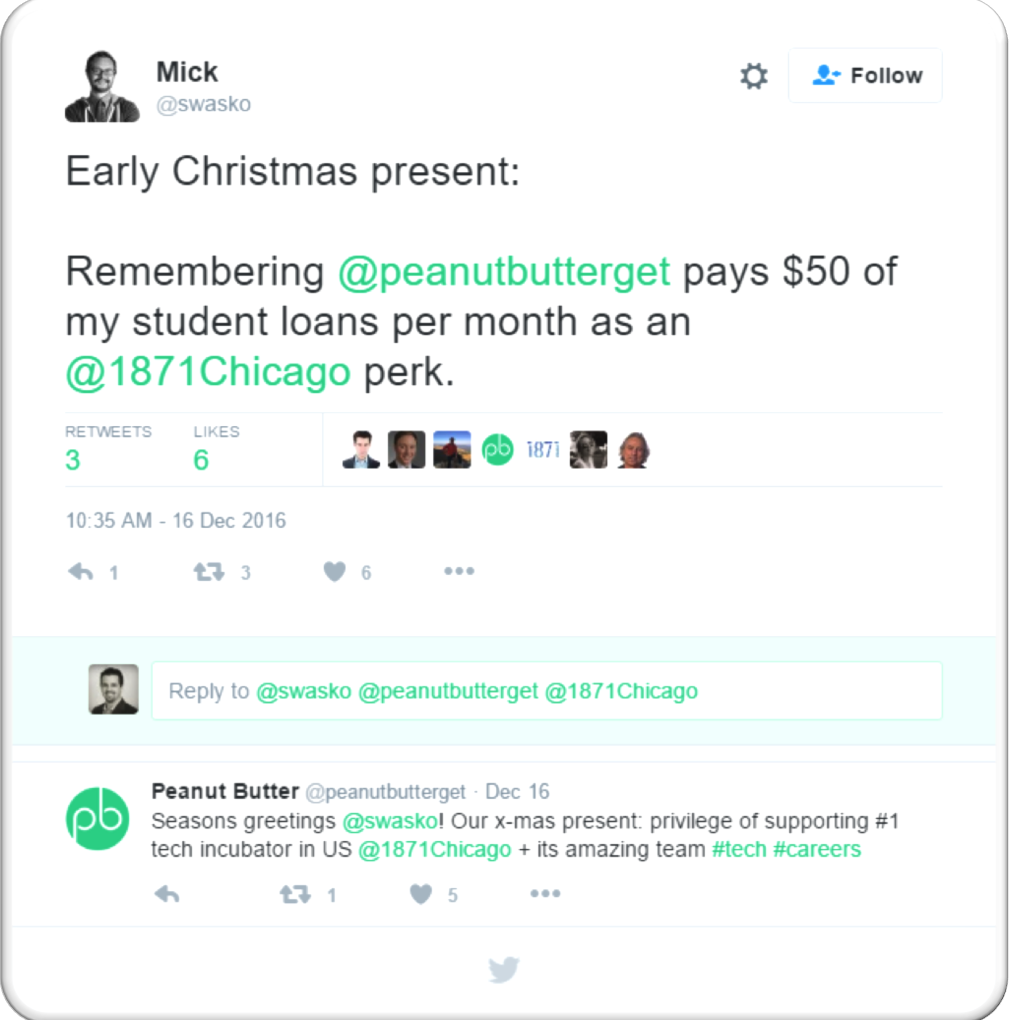
Everyone seems to be talking about student loan assistance as an employee benefit, but how exactly would this work at your company?
So far in our four-part series, we have covered estimating employee enrollment and defining the employer contribution amount. Now it’s time to make the business case. Helping your employees get out of debt faster feels good, but at the end of the day, you need to prove the financial value this program brings to your company.
Part 3: Making the business case for a student loan assistance program
Employers moving forward with student loan assistance programs are doing so for two primary reasons:
1) To gain an edge in recruiting top talent to their organization
2) To realize significant cost savings by reducing turnover
The Millennial Benefits Preferences Study revealed a lot of interesting data regarding employee interest in student loan assistance programs, but the ROI associated with recruiting and retention really stood out.

Consider your specific talent goals when making the case for student loan assistance as an employee benefit.
For example, are you recruiting on college campuses and need to differentiate your company? Over 70 percent of the 2016 graduating class will graduate with some level of student debt. Telling recruits that your company will help them get out of debt faster is a compelling message that will resonate strongly with potential new hires. In fact, our data shows that, when compared to national averages, recent grads are 14 percent more likely to accept a job if student loan assistance is offered as a benefit.
Or, is your goal to curb turnover among your existing employee population? Respondents to our recent study indicated that they are willing to stay at a job 36 percent longer when student loan assistance is offered as an employee benefit. When you consider the total cost of turnover – recruiting, hiring and training a replacement + potential lost revenue while the new hire is ramping up – that 36 percent would be worth quite a bit to your organization.
Check out our ROI calculator for an estimate of the financial impact a student loan assistance program can have at your company. The calculator uses industry average data to model turnover cost savings. If you’d like a full plan analysis that is customized to your company, just get in touch to schedule time with a Peanut Butter team member.
Calculating measurable ROI associated with your student loan assistance program is a key step in evaluating a program. The models we provide should help you make a case for the projected financial impact. At the end of the day, though, this program is about positively impacting your employees and driving increased engagement. The Millennial Benefits Preferences Study revealed that employees consider paying off their student loans one of the most meaningful accomplishments in their life.

Employers who show a willingness to invest in meaningful benefits that materially impact their employees will reap the rewards of higher employee satisfaction, increased engagement and longer tenure with the company.
Just check out this unsolicited tweet a Peanut Butter client employee sent out just before Christmas as proof of what we are talking about:

So far we’ve covered estimating employee enrollment, defining employer contribution amounts and making the business case for student loan assistance. The final piece of our four-part series will present a framework for finding budget to fund your student loan assistance program.
If you already think a student loan assistance program might be right for your organization, schedule 30-minutes with a Peanut Butter team member to discuss how we can design a custom plan specific to your organization’s needs. Just click ‘Get Started’ below and we’ll be in touch.